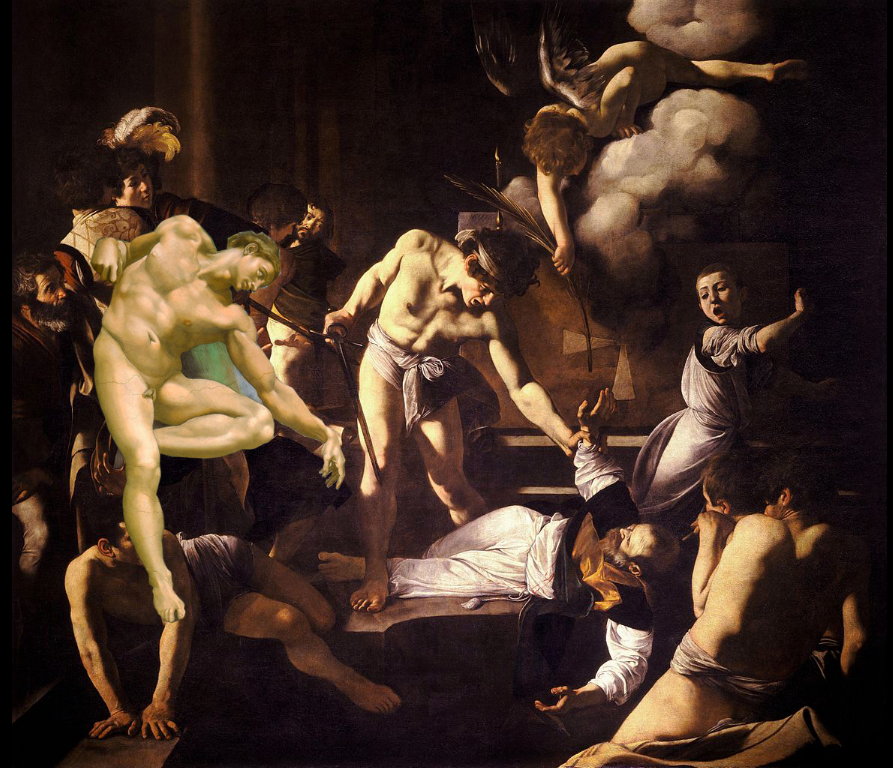This is the "Martyrdom of St. Matthew" from the Contarelli Chapel in San Luigi Francesi in Rome.
Caravaggio's version of the martyrdom was inspired by the Golden
Legend . Matthew was murdered while celebrating mass in the Ethiopian city of Nadaber. He had refused to marry the King Hirtacua to Ephigenia, a consecrated virgin. Upset at this, the King sent an assassin to kill the saint.
The white vestments of Matthew set against the dark background bring our attention to the center of the painting, as the assassin stands over the saint, about to
kill him. At left we see a group of young men (including Carvaggio's self portrait at the back) dressed in contemporary
17th C clothing (as in the "Calling"). This group could be the faithful who, upon witnessing the
murder, ran to light fire to the kings palace. On the right is the altar
boy running away from the scene while just behind him is the altar. The bottom group is somewhat confusing as it seems the figures are
distorted and/or limbless. Could this refer to the cripples that St. Matthew was
known for healing? The strange space they are in may be a reference to the Pool of Bethedusa – a healing
pool in Jerusalem mentioned in St. John’s Gospel.
It is the grouping of St Matthew and the assassin that is most interesting. Once again Caravaggio references Michelangelo's Creation of Adam, using the body of
Adam in the place of the assassin. Below I have photoshopped Adam next to the assassin to demonstrate the similarity:
This assassin is Adam up right, on his feet. Adam who has become
sinner and been exiled from Paradise. The assassin/Adam grabs the hand of Matthew,
trying to block contact with the palm of martyrdom being offered to him by the
angel above. Adam here is an image of arrogance in contrast to the redemptive power offered to Matthew. It is sin that prevents us from receiving the grace of God. In this grouping Caravaggio represents the complex rapport between human and divine.
With "The Calling of St. Matthew", the hand of Adam became the
hand of Christ that calls Matthew. In "The Martyrdom", the body of Adam just created becomes the arrogant body of the assassin of St. Matthew. The angel above Matthew is one of the angles from the flight of the angels within God the
Divine Creator.
In the next post we will see how Caravaggio continues to reference the Sistine Chapel in his painting of "Supper at Emmaus"



.jpg)
.jpg)

